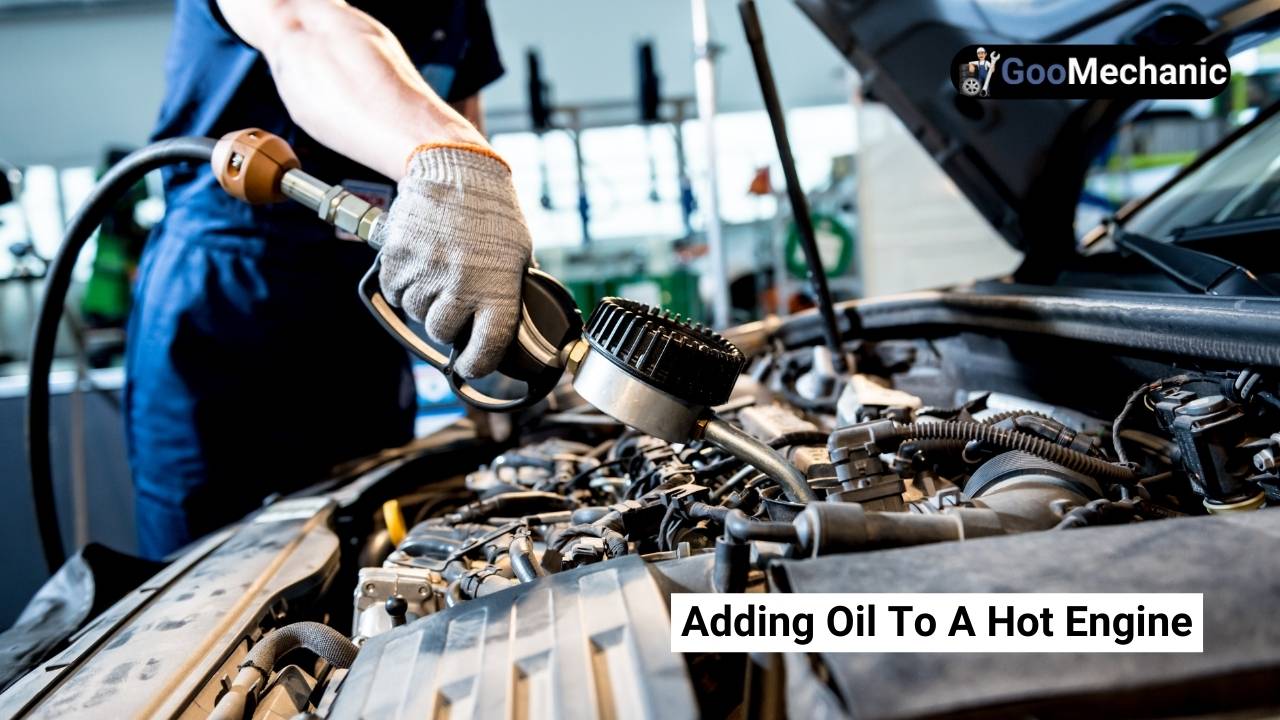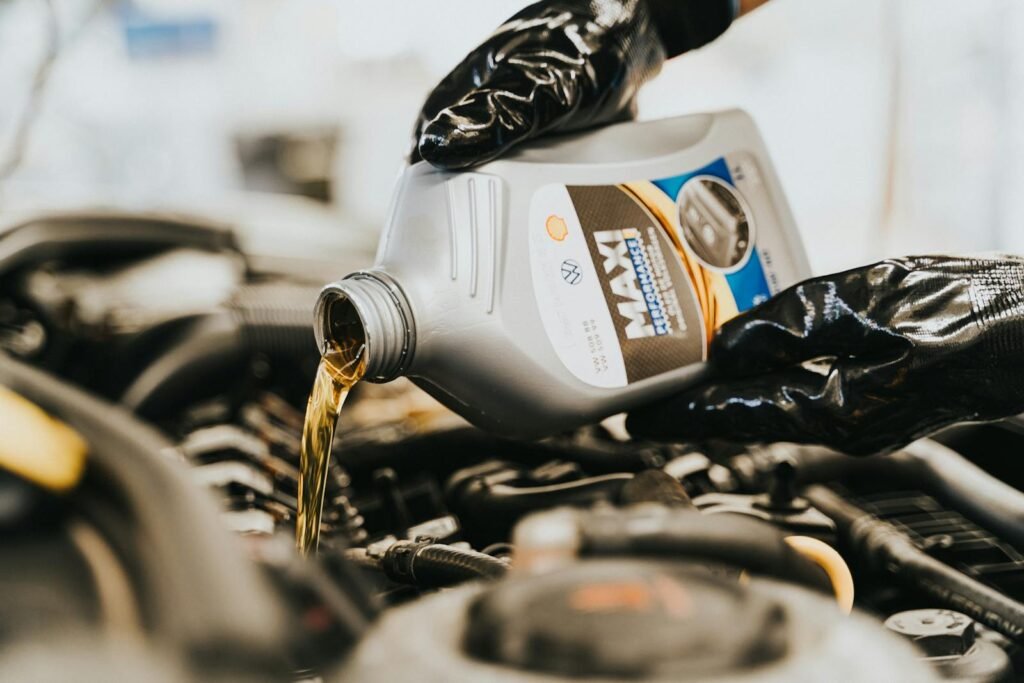Yes, you can put oil in your car when it’s hot. Ensure the engine is off and allow it to cool slightly.
Changing or adding oil is crucial for your car’s performance and longevity. Regular oil maintenance ensures the engine runs smoothly and efficiently. While it is generally safe to add oil to a hot engine, caution is necessary. Turn off the engine and wait a few minutes for it to cool down a bit.
This prevents potential burns and ensures the oil flows properly. Always check the oil level using the dipstick and add the recommended type of oil for your vehicle. Proper oil maintenance can prevent costly repairs and keep your car running optimally.
Importance Of Engine Oil

Engine oil is crucial for your car’s engine. It keeps the engine running smoothly. Without it, the engine could fail. Understanding its importance helps you maintain your car better.
Role In Lubrication
Engine oil acts as a lubricant. It reduces friction between engine parts. This prevents wear and tear. Less friction means a longer engine life. Oil forms a protective layer over engine parts. This stops them from grinding against each other. A well-lubricated engine runs more efficiently.
Impact On Engine Performance
Engine oil impacts how well your car runs. Clean oil ensures smooth engine operation. It helps in cooling the engine by dissipating heat. Proper oil levels improve fuel efficiency. Dirty or low oil can cause engine parts to overheat. This reduces your car’s performance. Regular oil changes keep your engine in top shape.
Types Of Engine Oil

Choosing the right engine oil is crucial for your car’s performance. Understanding the different types of engine oil can help you make an informed choice.
Synthetic Vs. Conventional
There are two main types of engine oil: synthetic and conventional. Synthetic oil is man-made and offers better performance. It provides superior lubrication and protects the engine well. Conventional oil is derived from crude oil and is less refined.
Here’s a quick comparison:
| Feature | Synthetic Oil | Conventional Oil |
|---|---|---|
| Performance | High | Moderate |
| Price | Expensive | Cheaper |
| Engine Protection | Excellent | Adequate |
| Longevity | Long-lasting | Needs frequent change |
Viscosity Ratings
Viscosity is the oil’s thickness. It’s crucial for proper engine lubrication. The ratings are given in a format like 5W-30. The first number with a ‘W’ indicates the oil’s flow in cold temperatures. The second number indicates its flow at hot temperatures.
Here’s a simple breakdown:
- 5W-30: Flows well in cold and hot temperatures.
- 10W-40: Thicker oil, better for older engines.
- 0W-20: Ideal for extremely cold climates.
Choosing the right viscosity ensures your engine runs smoothly. Always check your car’s manual for the recommended rating.
Adding Oil To A Hot Engine

Many car owners wonder about adding oil to a hot engine. It is a common concern due to the potential risks and safety concerns. This section will address these issues. We’ll also provide helpful tips to ensure your car runs smoothly.
Safety Concerns
Adding oil to a hot engine can pose several safety concerns. The engine parts are hot and can cause burns. Always be cautious when handling hot engine components. Wear protective gloves to keep your hands safe.
Another concern is the risk of oil splashing. Hot oil can splash and cause burns. Ensure you pour the oil slowly and carefully. Use a funnel to avoid spills and direct contact with hot surfaces.
Potential Risks
Adding oil to a hot engine also carries potential risks. Hot engine parts can cause the oil to degrade faster. This can affect the oil’s performance and the engine’s efficiency. Always check the oil temperature before adding more.
Another risk is overfilling the engine with oil. Too much oil can cause pressure build-up. This can lead to leaks and damage to engine seals. Use the dipstick to measure the oil level accurately.
Here are some tips to follow:
- Wait for the engine to cool down before adding oil.
- Use the correct type of oil for your car.
- Check the oil level regularly to avoid overfilling.
By following these tips, you can safely add oil to your car. Keep your engine running smoothly and efficiently.
Steps To Add Oil Safely
Knowing how to add oil to your car safely is crucial. Follow these simple steps to keep your engine running smoothly.
Preparation Tips
- Park your car on a level surface.
- Turn off the engine and let it cool for a few minutes.
- Gather all necessary tools: oil, funnel, and rag.
- Check your car’s manual for the correct oil type.
Correct Procedure
- Open the hood of your car.
- Locate the oil cap, usually labeled with an oil can icon.
- Remove the oil cap carefully.
- Place a funnel in the oil fill hole.
- Pour the recommended amount of oil slowly.
- Check the oil level using the dipstick.
- Replace the oil cap securely.
- Close the hood and wipe any spilled oil.
Following these steps ensures safe oil addition to your car. It helps maintain engine health and performance.
Signs Your Car Needs Oil
Keeping your car’s engine healthy is crucial. One key aspect is maintaining proper oil levels. Knowing the signs your car needs oil can save you from costly repairs. Below are some clear indicators.
Dashboard Indicators
Your car’s dashboard has warning lights. These lights alert you to issues. Oil pressure warning light is one such indicator. When this light turns on, your car needs oil immediately. This light may be red or yellow. Red means urgent; yellow means soon.
Another important indicator is the check engine light. This light can signal various problems. One common issue is low oil levels. Addressing this promptly can prevent engine damage.
Unusual Engine Noises
Engines should run smoothly. Unusual noises can indicate problems. If you hear knocking or ticking sounds, your car may need oil. These noises often happen when oil levels are low. The engine’s moving parts need lubrication. Without enough oil, they create friction and noise.
Pay attention to grinding sounds as well. Grinding can mean metal parts are rubbing together. This is a serious issue and needs immediate attention. Adding oil can sometimes solve the problem quickly.
Regular Oil Maintenance
Regular Oil Maintenance is essential for keeping your car running smoothly. Maintaining the correct oil levels ensures optimal engine performance. Many drivers often ask, “Can I put oil in my car when it’s hot?” Understanding regular oil maintenance can help answer this question.
Changing Oil Schedule
Changing the oil regularly extends your car’s lifespan. Follow your car manufacturer’s recommendations for the oil change schedule. Usually, changing the oil every 3,000 to 5,000 miles is a good practice.
Here’s a simple table for reference:
| Miles Driven | Oil Change Frequency |
|---|---|
| 0-3,000 miles | Every 6 months |
| 3,000-5,000 miles | Every 3-4 months |
| Over 5,000 miles | Every 2-3 months |
Checking Oil Levels
Regularly checking the oil level is crucial. Use the dipstick to check the oil level. Ensure the car is parked on a level surface. Pull out the dipstick, wipe it clean, insert it back, and pull it out again.
If the oil level is low, add oil immediately. It is safe to add oil to a hot engine, but be cautious. Use a funnel to avoid spills. Check the oil level again after adding oil to ensure it is adequate.
- Step 1: Park on a level surface.
- Step 2: Pull out the dipstick and wipe it clean.
- Step 3: Insert the dipstick back and pull it out again.
- Step 4: Add oil if the level is low.
- Step 5: Recheck the oil level.
By following these simple steps, you can ensure your car’s engine runs efficiently. Regular oil maintenance is the key to a long-lasting vehicle.
Common Myths About Engine Oil
Many drivers believe myths about engine oil. Understanding the facts helps maintain your car better. Here, we debunk common myths about engine oil.
Oil Change Frequency
Some people think they need to change their oil every 3,000 miles. This is not always true. Modern cars often require oil changes every 5,000 to 7,500 miles. Check your car’s manual for the right interval.
| Car Type | Oil Change Interval |
|---|---|
| Modern Cars | 5,000 – 7,500 miles |
| Older Cars | 3,000 miles |
Mixing Oil Types
Another myth is that mixing oil types can harm your engine. While not ideal, mixing oils is usually safe for short periods. Always use the oil type recommended by your car’s manufacturer.
- Using different brands is usually okay.
- Stick to the same viscosity.
- Refer to the car manual for guidance.
Choosing The Right Oil For Your Car
Choosing the right oil for your car is crucial. It ensures your engine runs smoothly. Not all oils are the same. Some are better suited for certain cars. Here are key factors to consider.
Manufacturer Recommendations
Always follow the manufacturer’s recommendations for oil type. Check your car’s manual for guidance. The manual will specify the best oil grade. Using the wrong oil can harm your engine.
| Car Make | Recommended Oil |
|---|---|
| Toyota | 0W-20 |
| Ford | 5W-30 |
| Chevrolet | 10W-30 |
Climate Considerations
Climate affects your choice of oil. In cold climates, thinner oils work best. They flow easily in cold temperatures. In hot climates, thicker oils are better. They provide better protection at high temperatures.
- Cold climate: 0W-20, 5W-30
- Hot climate: 10W-40, 20W-50
Choosing the right oil helps your engine last longer. It ensures smooth performance in all conditions.
Frequently Asked Questions
Can I Add Oil When My Car Is Hot?
Yes, you can add oil when your car is hot. Just be cautious to avoid burns.
Can I Put Oil In My Car After Driving It?
Yes, you can add oil after driving. Let the engine cool for a few minutes first.
How Long To Let An Engine Cool Before Checking The Oil?
Let the engine cool for at least 10-15 minutes before checking the oil. This ensures accurate readings.
Can I Add Oil While My Car Is Running?
No, never add oil while your car is running. Turn off the engine first to avoid damage or injury.
Conclusion
It’s best to let your car cool before adding oil. Hot oil can cause burns and inaccurate readings. Always check the manual for specific instructions. Maintaining proper oil levels ensures engine health and longevity. Stay safe and keep your car running smoothly by following these simple guidelines.

